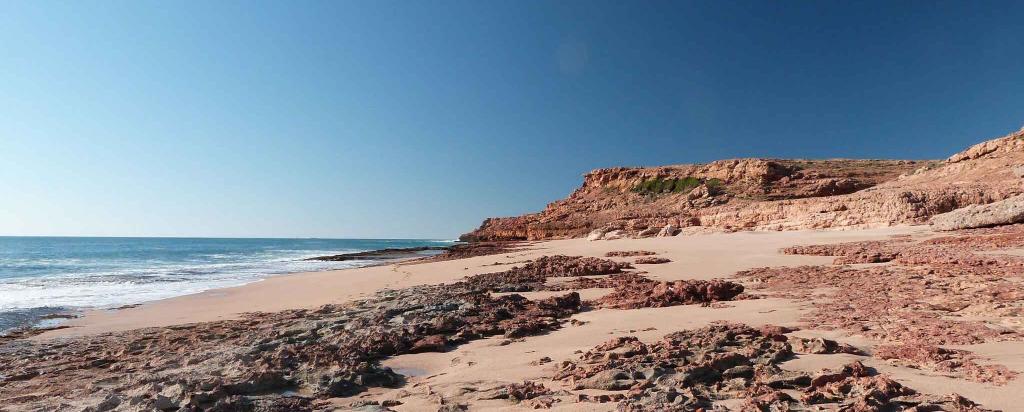
An archaeological study has found evidence of the earliest occupation of the Australian coast from Barrow Island, Northwest Australia.
A large multi-disciplinary research team, led by Professor Peter Veth of the University of Western Australia, head of the Barrow Island Archaeology Project, has published the findings in Quaternary Science Reviews.
The excavation and dating of artefacts and sea and land fauna from sites on the island provide evidence of the Aboriginal occupation of Australia dating back to a period between 46,200 and 51,100 thousand years. These estimates overlap with, and effectively push back, the earliest dates now widely accepted for the first occupation of Australia.
The remnants of shellfish that were consumed 42,500 years ago represent the oldest marine dietary remains found in Australia.
The research provides significant new evidence that humans in the Late Pleistocene also adapted to the desert landscapes of the northwest by using maritime resources for subsistence.
ANSTO’s Centre for Accelerator Science was one of four independent facilities that dated a range of specimens retrieved from deposits, which included charcoal and shell.
The combined results of radiocarbon and optical luminescent dating provided largely consistent chronologies.
Dr Vladimir Levchenko, who supervised radiocarbon dating on the Antares accelerator, said, “Professor Veth’s group, who carried out a field survey over three years, has helped to clarify our understanding of the behaviour of modern peoples who dispersed from Africa and reached Australia.”
“This research strongly supports the theory that Aboriginal people, although living inland, were relying on the resources of the coast.”
“We were happy that our excellent facilities for accelerator mass spectrometry could contribute to this significant research.”
“Our quality control, which includes the use of a large pool of process blanks that are updated continuously, enhance the accuracy and reliability of our measurements,” said Levchenko.
“Although the coastal areas where the first inhabitants of our continent lived now lie under water, the team located a site on a continental island that has proved to be remarkably rich,” said Levchenko.
Barrow Island, Northwest Australia, was connected to the mainland by a land bridge until 6,800 years ago. Aboriginal occupation of the island was abandoned when sea level rose.
One of the largest excavation sites with stratified deposits on the island was the 100m long Boodie Cave, where they recovered over 10,000 artefacts.
The earliest deposits from the lowest level of the cave included burnt bone, shell and stone artefacts.
The investigators concluded that foragers carried molluscs from the coast up to 20 kilometres to the cave.
Marine resources were transported to the cave in varying quantities through all periods of occupation, despite fluctuating sea levels and dramatic extensions of the coastal plain.
The limestone cave and arid climate provided suitable conditions for the excellent preservation of archaeological deposits.
Other participating institutions included the University of Queensland, James Cook University, University of Waikato, University of Adelaide, California State University, Sacramento State, Curtin University, University of Oxford, and the Western Australia Department of Parks and Wildlife.
The research had the participation and support of the Buurabalayji Thalanyji Aboriginal Corporation and Kuruma Marthudunera Aboriginal Corporation and was funded by the Australian Research Council as a Discovery Project.
http://www.sciencedirect.com/science/article/pii/S0277379117302640
Media InformationANSTO's nuclear research techniques provide evidence of earliest Aboriginal occupation of AustraliaPDF